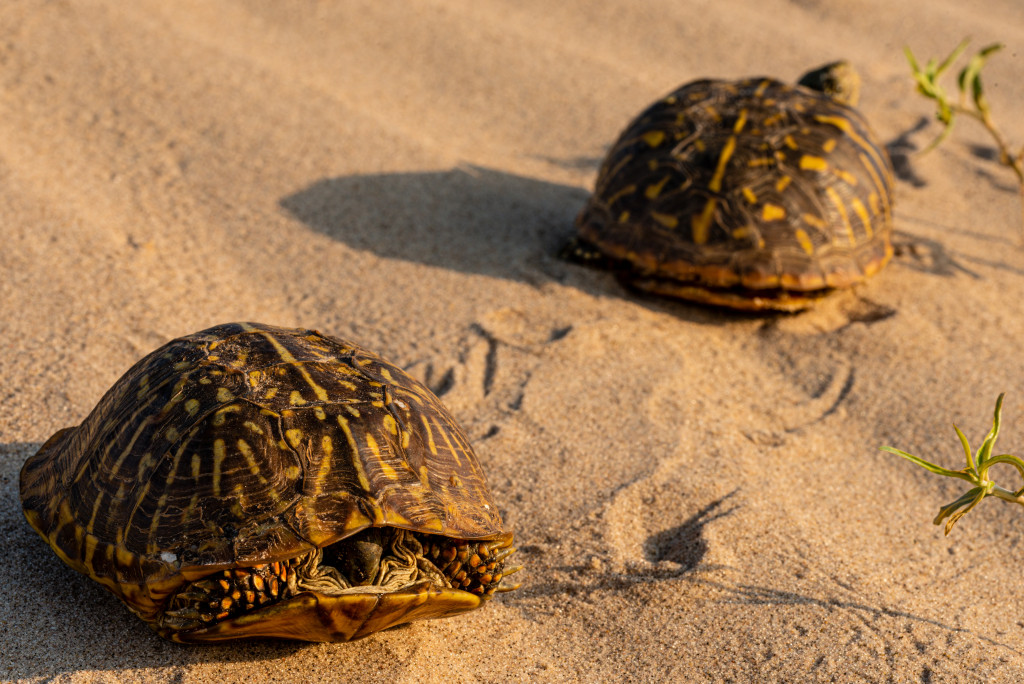
By Gerry Steinauer, Botanist
One morning last June, while photographing wildflowers in the Sandhills blowout, I came upon a pair of ornate box turtles. I determined, based on eye color — male box turtles have red eyes, while a female’s are yellowish-brown — that they were of the opposite sex, apparently an amorous couple on a blowout tryst. And I was intruding.
I hated to be rude, but with no box turtle photographs in my portfolio, this was, for me, a fortuitous photo opportunity. So I crept in close to the couple and set up my tripod. The male, either scared, shy or embarrassed, wanted nothing to do with this botanical paparazzo and instantly retreated to the safety of his shell, leaving only the tip of his nose sticking out. He remained unwilling to pose and, after a few photos, skedaddled, running as fast as a turtle can to shielding vegetation, perchance a patch of sand lovegrass, downslope from the blowout.
The female, on the other hand, was not the least bit camera shy. She stayed put, head exposed, the perfect model of female turtleness. Perhaps she decided that dealing with a camera-carrying botanist was less stressful than being pestered by an aroused male. For a female box turtle, mating is a rather trying event, as here described by one author: “The male chases the female, biting her on the neck, head, and the edge of her shell. He may even roll her over on her back. The male eventually mounts the female … and hooks his toes into the female’s shell.” The female’s only satisfaction appears to be that pushy males sometimes fall on their backs while doing the deed and, if they’re in a place where they can’t flip themselves over again, die.
After posing for about 10 minutes, the female became restless, her eyes seeming to say, “That’s enough old chap. I need to get going.” So I folded up my tripod, thanked her for her time and left. At the dune’s crest, I looked back to see her sauntering downslope, perhaps to locate her beau. Or not.
